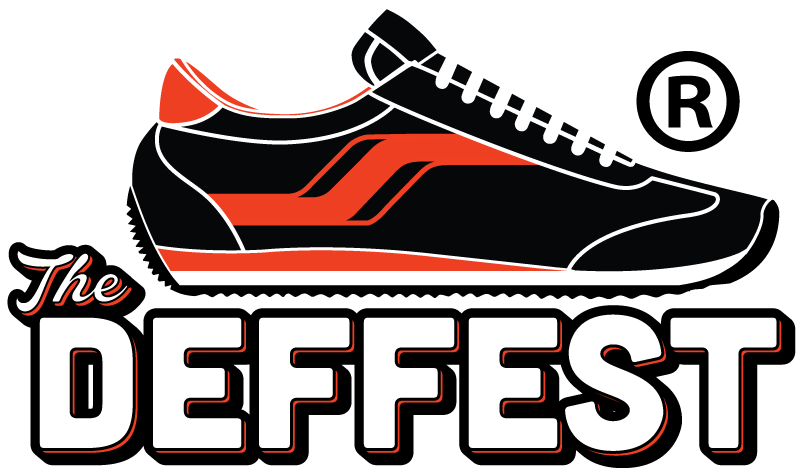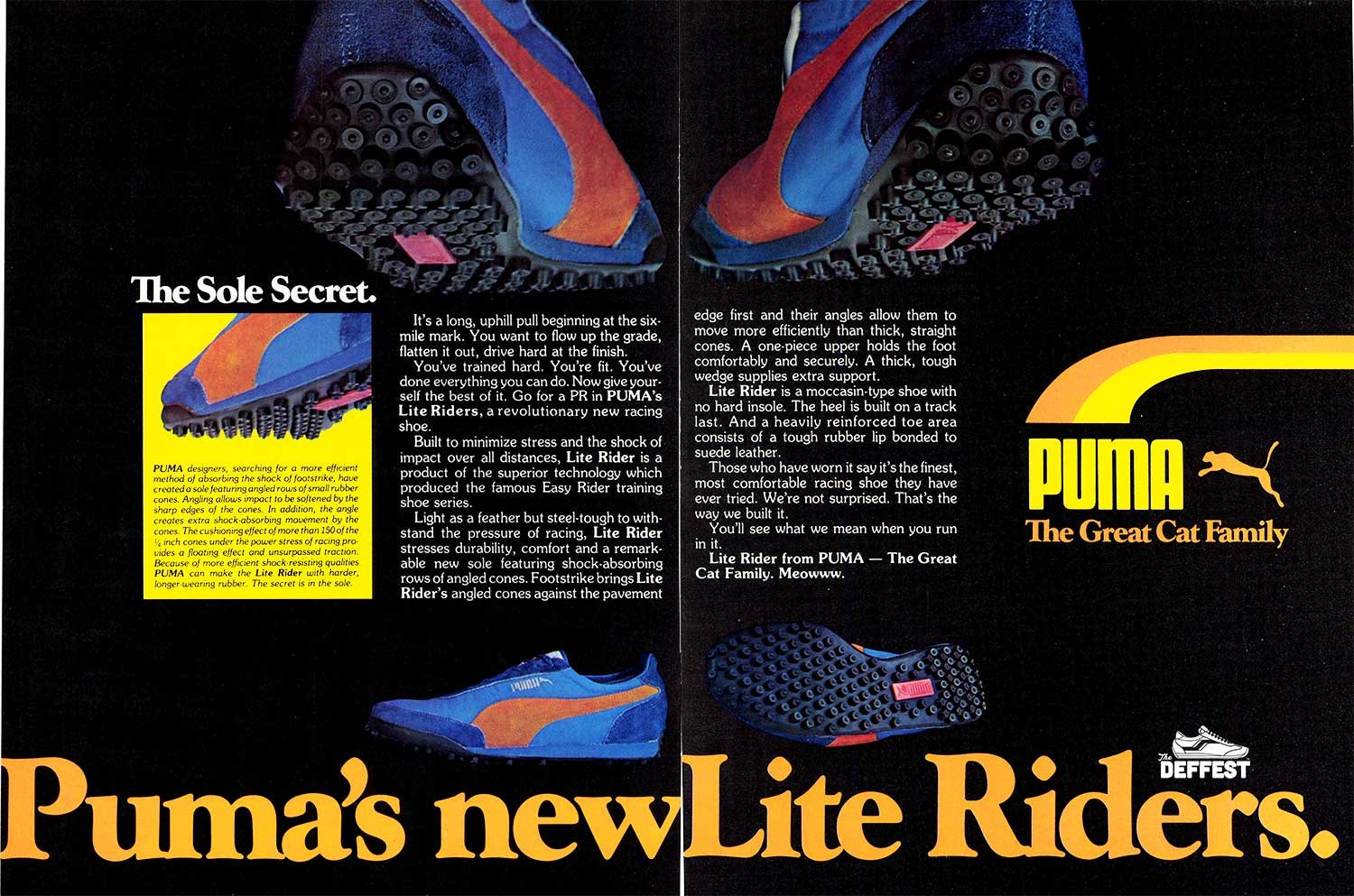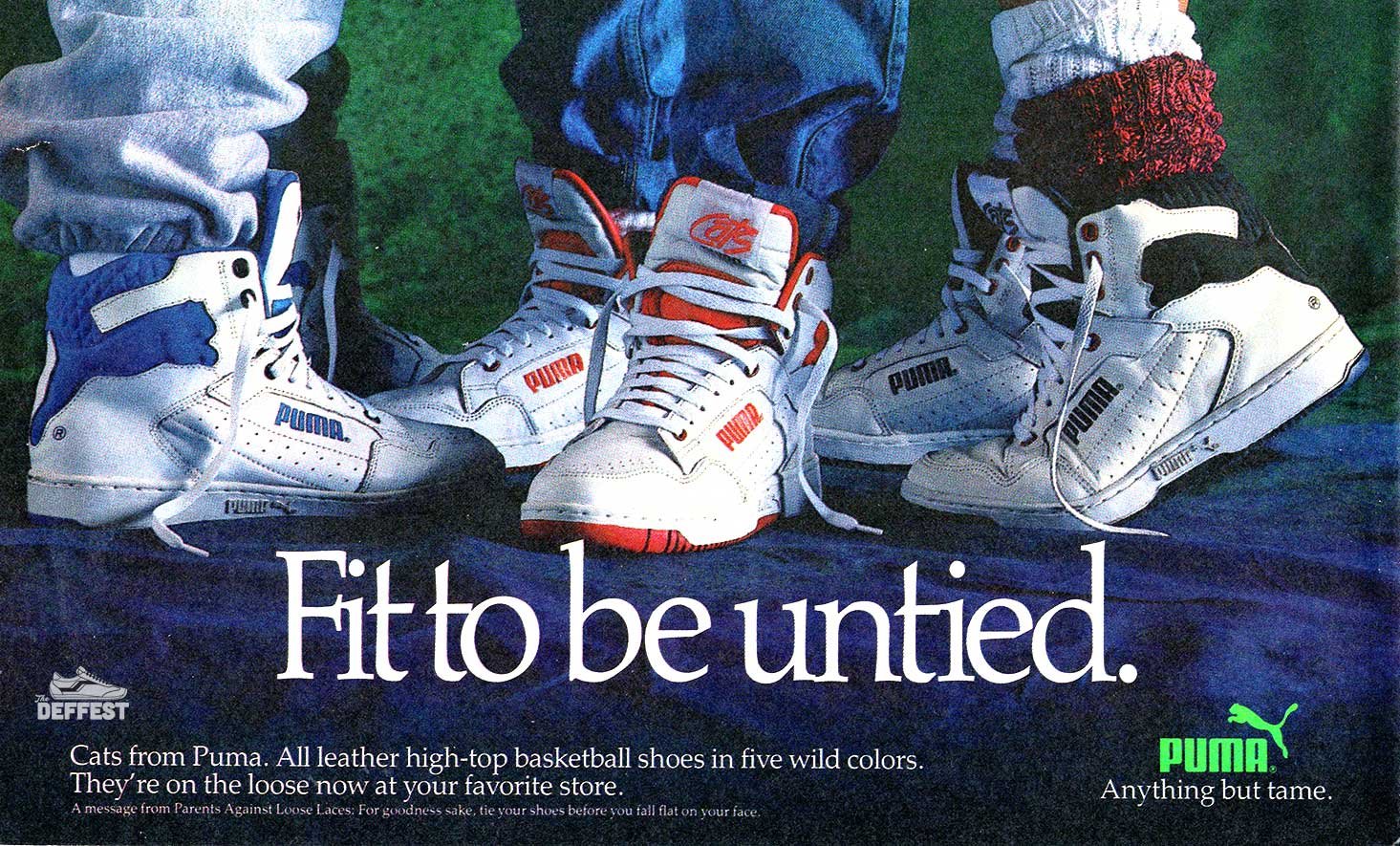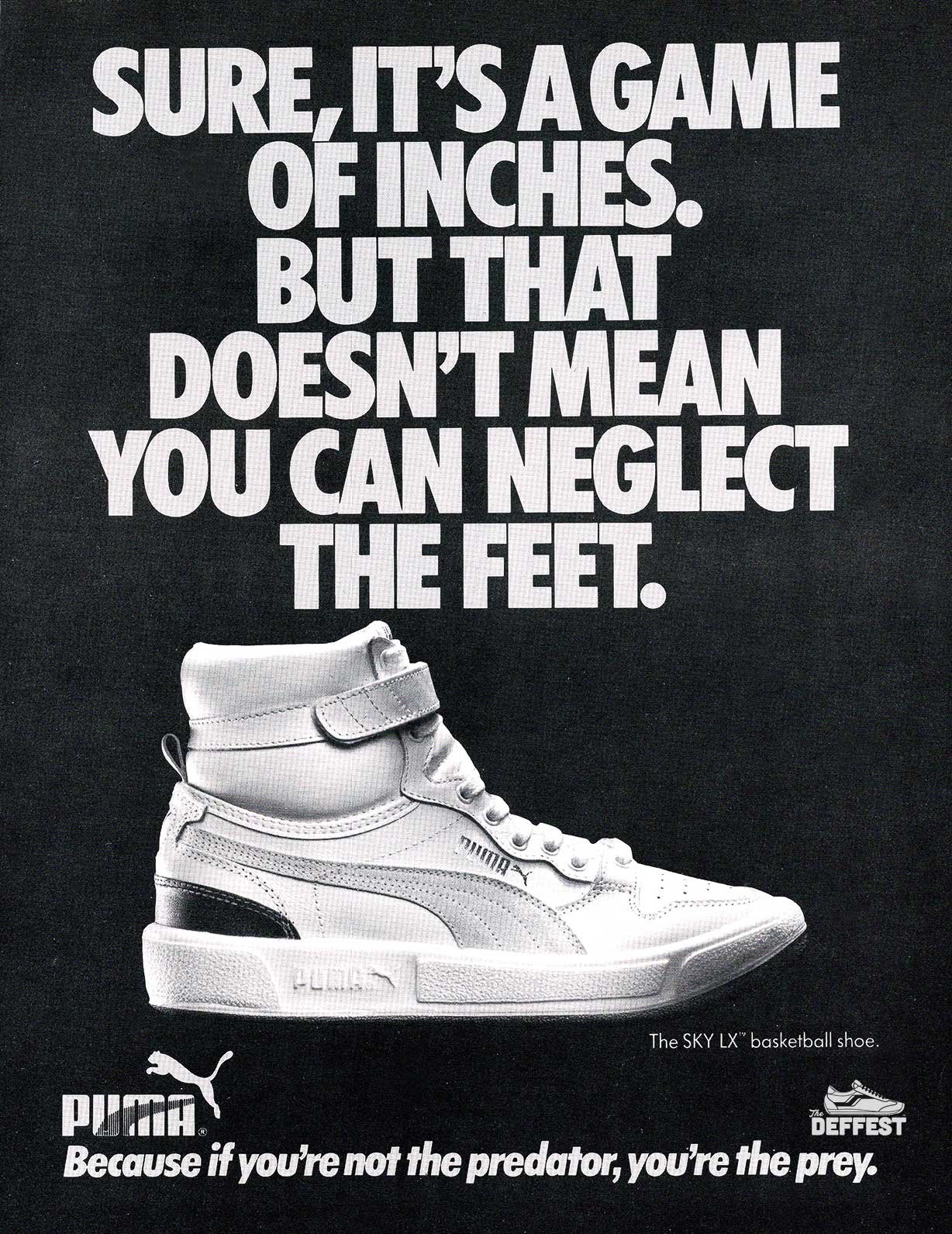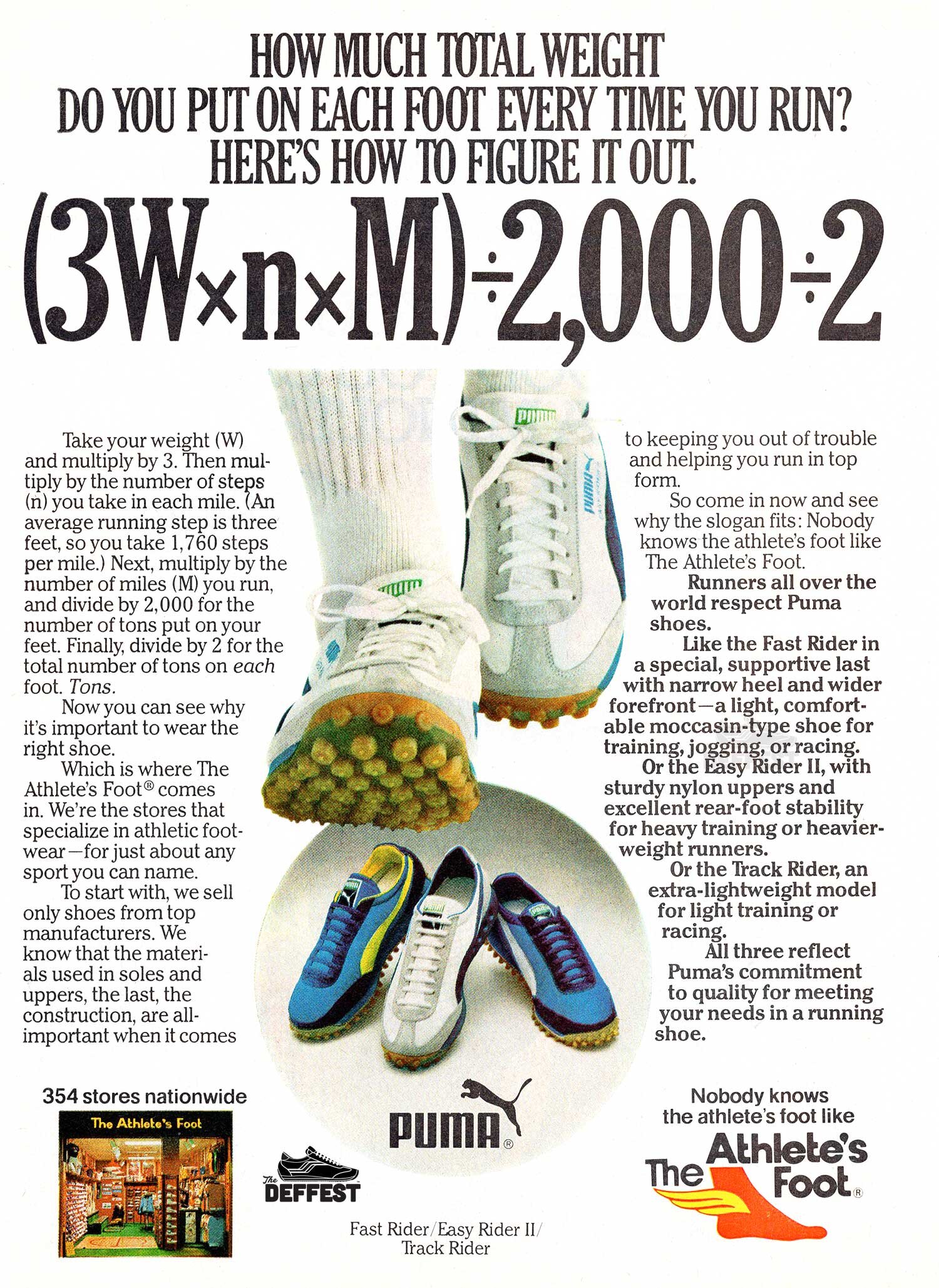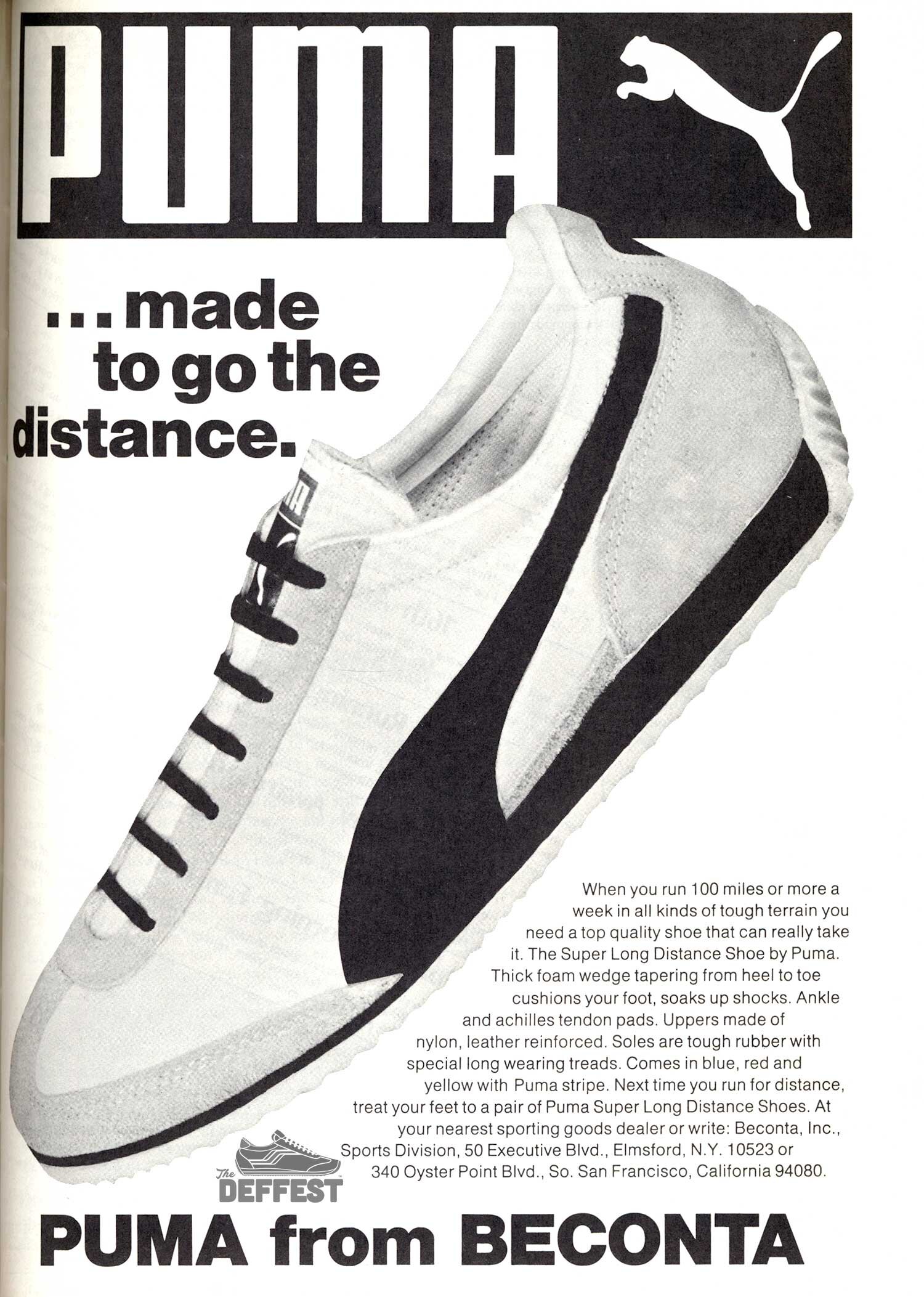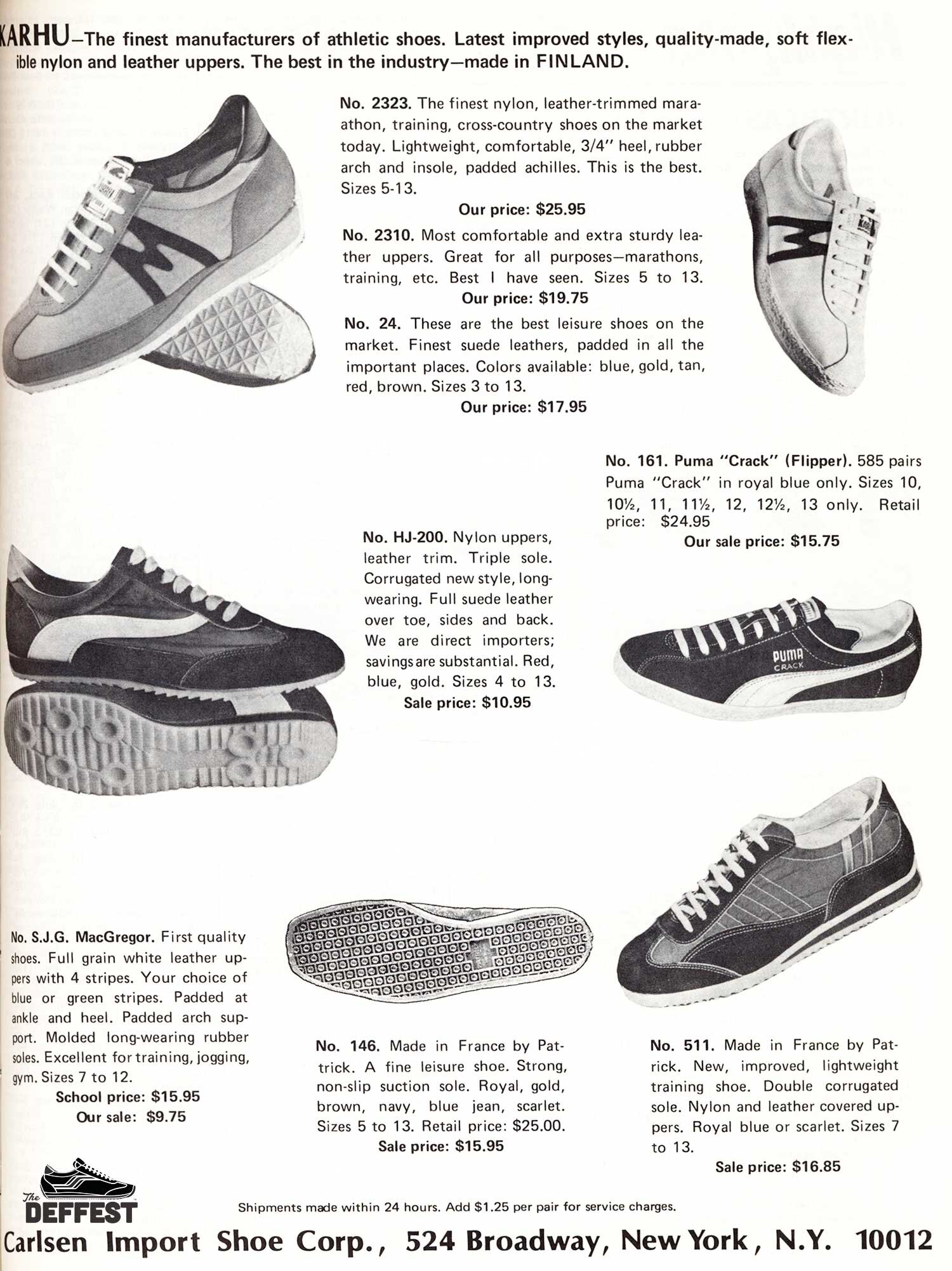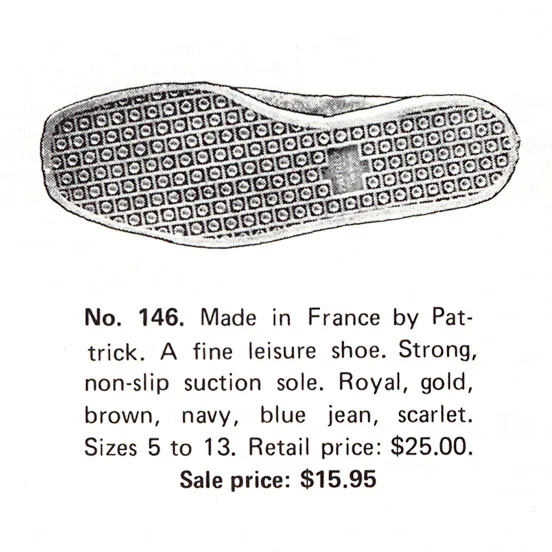Here's a great old school 1970s sneaker ad for Puma Lite Riders vintage running shoes. This original vintage ad is from 1978 and is available over at our Rewind Running web shop.
Puma’s new Lite Riders.
It's a long, uphill pull beginning at the six-mile mark. You want to flow up the grade, flatten it out, drive hard at the finish. You've trained hard. You're fit. You've done everything you can do. Now give yourself the best of it. Go for a PR in PUMA's Lite Riders, a revolutionary new racing shoe.
Built to minimize stress and the shock of impact over all distances, Lite Rider is a product of the superior technology which produced the famous Easy Rider training shoe series. Light as a feather but steel-tough to with-stand the pressure of racing, Lite Rider stresses durability, comfort and a remarkable new sole featuring shock-absorbing rows of angled cones. Footstrike brings Lite Rider's angled cones against the pavement edge first and their angles allow them to move more efficiently than thick, straight cones. A one-piece upper holds the foot comfortably and securely. A thick, tough wedge supplies extra support.
Lite Rider is a moccasin-type shoe with no hard insole. The heel is built on a track last. And a heavily reinforced toe area consists of a tough rubber lip bonded to suede leather.
Those who have worn it say it's the finest, most comfortable racing shoe they have ever tried. We're not surprised. That's the way we built it.
You'll see what we mean when you run in it.
The Sole Secret.
PUMA designers, searching for a more efficient method of absorbing the shock of footstrike, have created a sole featuring angled rows of small rubber cones. Angling allows impact to be softened by the sharp edges of the cones. In addition, the angle creates extra shock-absorbing movement by the cones. The cushioning effect of more than 150 of the 1/4 inch cones under the power stress of racing provides a floating effect and unsurpassed traction. Because of more efficient shock-resisting qualities PUMA can make the Lite Rider with harder, longer-wearing rubber. The secret is in the sole.
Lite Rider from PUMA The Great Cat Family. Meowww.
PUMA
🐆
The Great Cat Family
